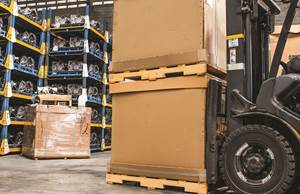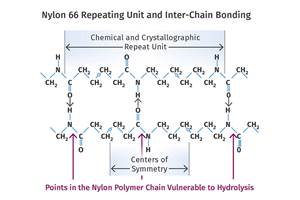Advancing Composites in the Black Hills of SD
The CNAM Center at the South Dakota School of Mines seeks to act as a nucleus for composites manufacturing.
When you think of South Dakota, Mount Rushmore, Sturgis and Deadwood all come to mind. But a group at the South Dakota School of Mines & Technology hopes that one-day South Dakota is also viewed as a national and global hub for advanced composites manufacturing R&D. The Composite and Nanocomposite Advanced Manufacturing (CNAM) Center at the in Rapid City was launched in September 2013 with a goal to help maximize the potential for composites manufacturing. Funded through a five-year award from South Dakota Governor’s Office, CNAM includes the participation of a consortium of corporations, which features three processors (, Brookings, SD, Continental, Auburn Hills, Mich., and , Sioux Falls, SD) as well as , Avon Lake, Ohio.
“What is compelling about CNAM is the overall intent to bring composites more into the mainstream for applications like transportation, infrastructure and energy,” Joe Golba, lead scientist, reactive extrusion at PolyOne told Plastics Technology.
The market penetration of composites compared with steel and aluminum is still below potential. CNAM believes this is a combination of both expensive raw materials as well as a high manufacturing cost.
“We need to get the cost down of composites—both the materials and manufacturing cost,” said David Salem, director of CNAM. “We believe that CNAM can make real advancements in this area.”
Why CNAM? Well, Salem says CNAM is an industry-driven center and its overall goal is to see the fruits of CNAM’s research and development go to the market. As the membership covers the entire supply chain, Salem says there is a great deal of collaboration in the center.
CAPE LAB
The School of Mines is home to the Composite and Polymer Engineering (CAPE) Lab, which features almost $10 million of advanced equipment in 10,000 square feet of laboratory space. From a Cincinnati Milacron injection molding machine to a Taricco industrial autoclave for composite curing, the CAPE Lab features plenty of polymer and composite processing and prototyping equipment. In addition to a number of graduate students, CAPE employs full-time, dedicated composites scientists and engineers.
TECHNICAL WORK
One interesting development to come from CNAM includes the development of a new manufacturing process for discontinuous fiber-reinforced thermoplastic sheet (CNAM-DiFTs). Provisional patents related to process and properties were filed on Aug. 11. (To view more about this process, check out PT’s New Process for Fiber-Reinforced Sheet.
CNAM is also working on a practical method to fabricate hybrid multi-scale –composites using in-situ polymerization of CBT, incorporating electrospun glass and carbon nanofibers combined with glass and carbon microfibers. Other work includes a model that has been developed to predict fiber orientation in injection molding processes, which has been demonstrated in case studies. Orientation predictions are being output into software to predict strength and failure based on orientation pattern.
Salem says that the IP developed at the university belongs to university, however, member corporations have exclusive rights to use the technology on licensing terms to be negotiated, and have first right of refusal.
The CNAM Center is interested in expanding its membership to additional corporations. If your organization is interested in participating or would like more information, contact .
Related Content
The Fantasy and Reality of Raw Material Shelf Life: Part 1
Is a two-year-old hygroscopic resin kept in its original packaging still useful? Let’s try to answer that question and clear up some misconceptions.
Read MorePolymer Showdown — PC/ABS vs. PC/PBT — May the Best Material Win
First in a series, experts from plastics engineering consultancy The Madison Group will pit leading thermoplastics against each other to see how they differ in processing characteristics, chemical resistance, thermal and mechanical performance, and more.
Read MoreBASF Highlighting How They 'Make, Use and Recycle Future Solutions'
NPE2024: BASF is using its proprietary computer-aided engineering tool Ultrasim when designing for sustainability in a broad range of industries.
Read MoreWhat is the Allowable Moisture Content in Nylons? It Depends (Part 1)
A lot of the nylon that is processed is filled or reinforced, but the data sheets generally don’t account for this, making drying recommendations confusing. Here’s what you need to know.
Read MoreRead Next
Making the Circular Economy a Reality
Driven by brand owner demands and new worldwide legislation, the entire supply chain is working toward the shift to circularity, with some evidence the circular economy has already begun.
Read MoreBeyond Prototypes: 8 Ways the Plastics Industry Is Using 3D Printing
Plastics processors are finding applications for 3D printing around the plant and across the supply chain. Here are 8 examples to look for at NPE2024.
Read More










